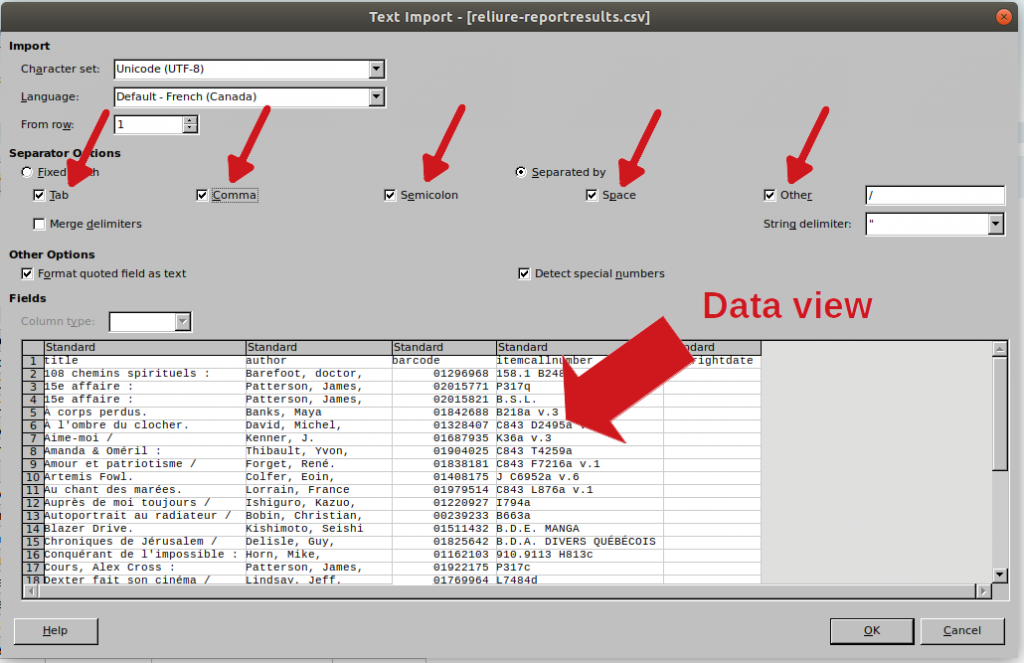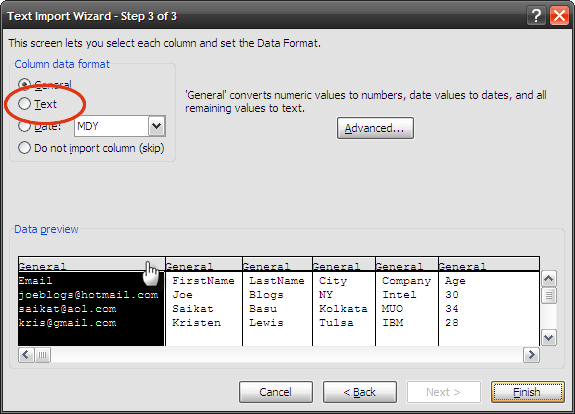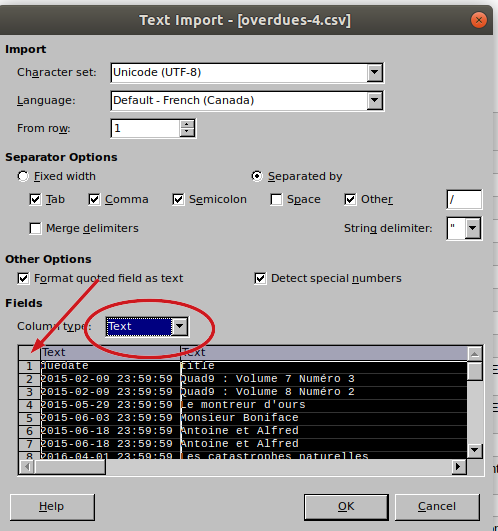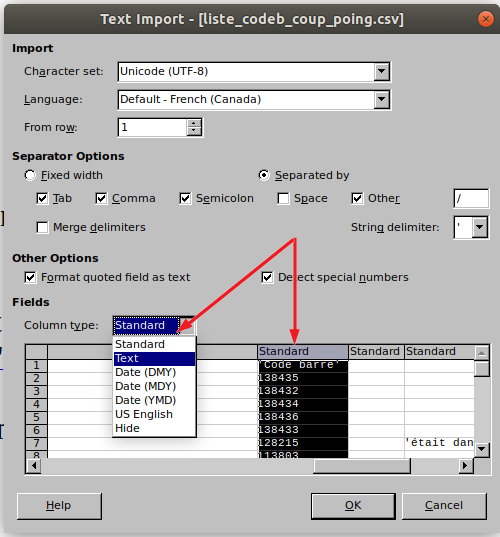CSV stand for Comma Separated Values.
A (.csv) file has simple data structure, it is basically a list of data entries surrounded by data separators. These files are mainly used for data transfer.
Unfortunately, data separators may vary depending on what symbol was defined in the software. Semicolons and commas are the most common.
When opening a (.csv) file, you are asked to define what data separators to use. These “separators” set the boundaries and tell the software program where the data should be cut into columns. For example, if you have selected a semicolon separator, this means that the software will create a column each time it detects a semi-column in the data.
example:
Tremblay, Jean; 888-123-4567; 1 Baker St; Parker, Bob; 222-123-4567; 12 Sunset boulevard;
When semicolon is selected, the data should be displayed like this:
| Tremblay, Jean | 888-123-4567 | 1 Baker St |
| Parker, Bob | 222-123-4567 | 12 Sunset boulevard |
How to open a (.csv) file
1 In Excel, select «Delimited», then click on «Next»
2. In Excel or similar spreadsheet program (example : LibreOffice):
check or uncheck «separator» boxes (tab, comma, semicolon, space and other symbol)
Combine separators until you are noticing separated columns.

When you have succeeded:
- Excel: click on «Next»
- Other software: stay on the same page.
3. Select the data format:
If you do have number starting with zeros… select the “text format” option to prevent automatic removal of zeros (e.g.
- Excel: click on each column and select «Text» format .
(the column should turn black when it is selected)

- Other software: In the «data view» section, click on the top left corner of the data table (the table should turned black)
- then select «Text» format


5. Click on «Finish» or «Ok»
